Integrated bars, stems, and headsets are all the rage in the cycling industry right now because they allow companies to design sleeker, prettier bikes, and many people love riding sleeker, prettier bikes. Our new Traildonkey 4.0 platform is fully compatible with integration if you chose to go that route. But should you build your TD4 (or Flaanimal) with an integrated cockpit? That is a decision to weigh carefully before you take the plunge.
But first, let’s make sure everyone is on the same page with terms.
Integrated Routing
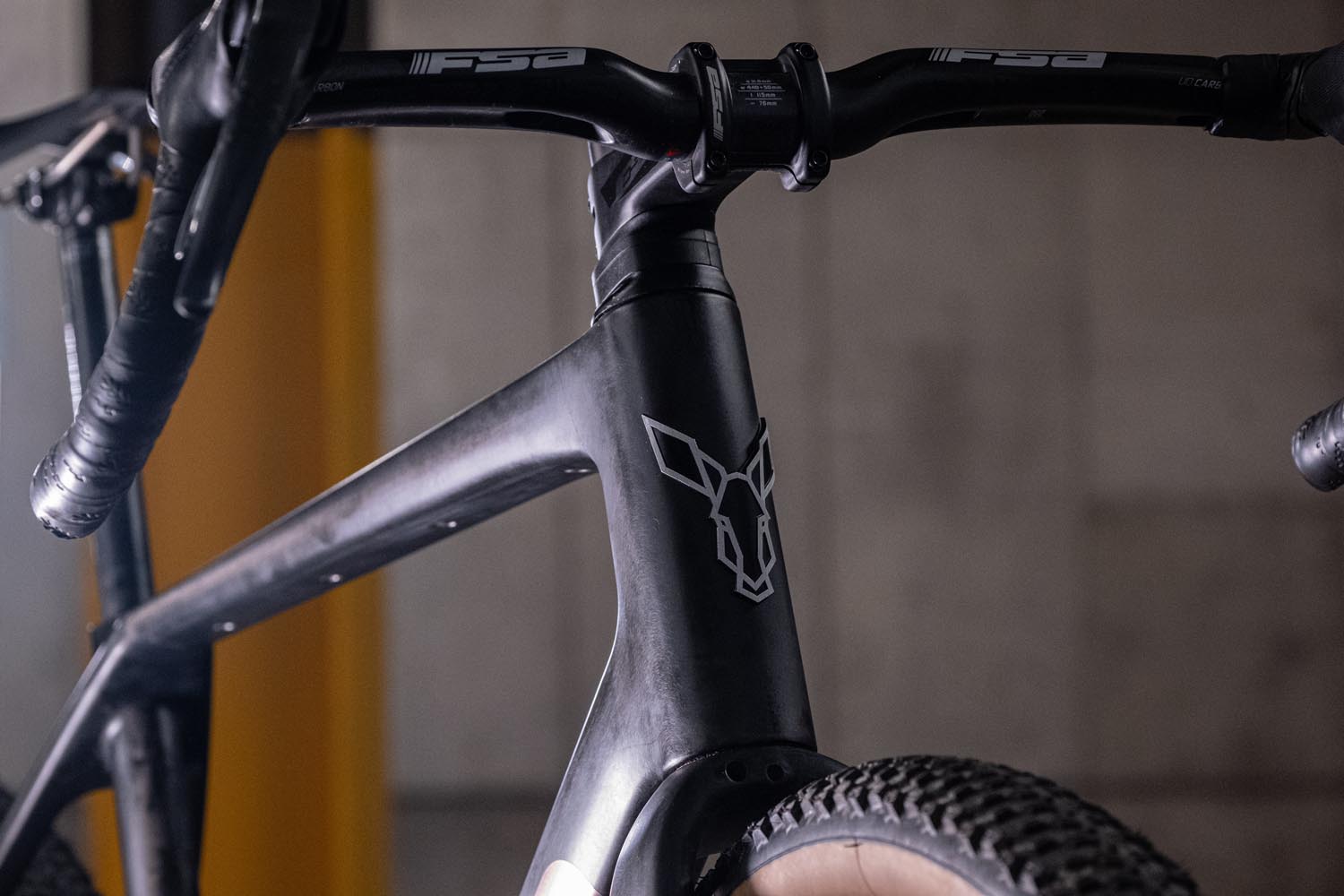
Integrated routing describes a system where all brake and shift housing and lines are run from the shift levers, through the inside of the bars, through the inside of the stem, and through the headset where they enter the frame on their way to derailleurs and brake caliper. When a bike is built this way you see essentially no routing lines except for where they emerge from the frame at the front brake, rear brake, front derailleur, or rear derailleur. If you are running wireless shifting there are no shift lines at all, and we would only be talking about brake lines. Bikes with integrated internal routing are quite cool looking, and if you’ve been around externally and traditionally routed bikes for a long time it is cause for a double take to look at a bike and see no evidence of the brake and shift lines at all. Integrated is clean. Integrated is sexy. Integrated cockpits (Bars, stems, and headsets) must be specifically designed for internal routing and use many non standard looking individual components such as headset uppers, headset spacers, and sometimes even stem clamp designs.
Semi-Integrated Routing
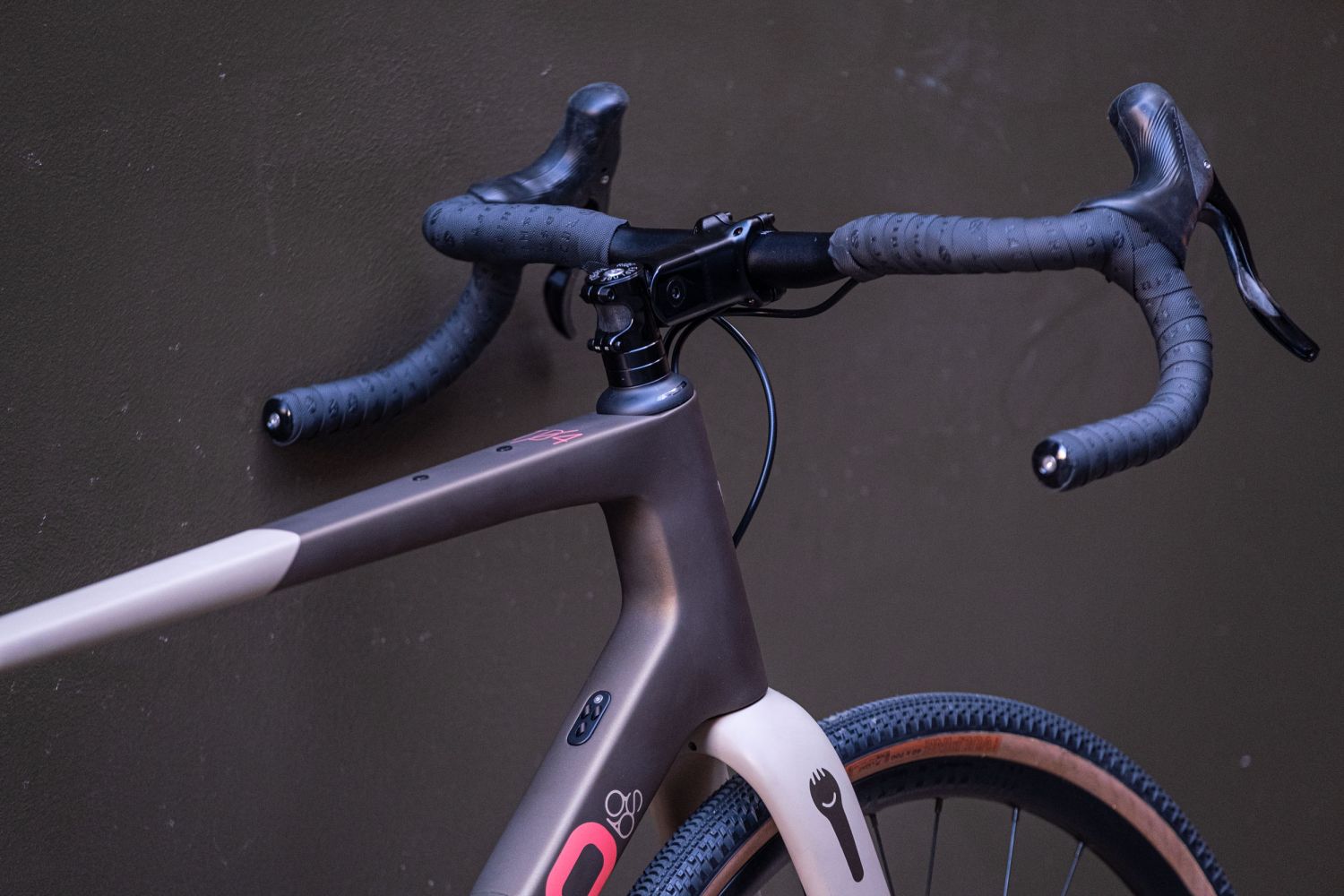
Semi-Integrated routing uses more traditional bars and stems that run your housing on the outside of the handlebar (but under the bar tape) and then externally beneath the stem before going into the frame at the headset about where the upper headset bearing is. This requires specially designed 52mm upper headset bearings that leave room for the housing to sneak by and into the frame, and it also requires special headset assemblies which have holes in the topcaps for the routing to pass through. Once inside the frame the housing routes normally to your derailleurs and brakes.
Non Integrated Internal Routing
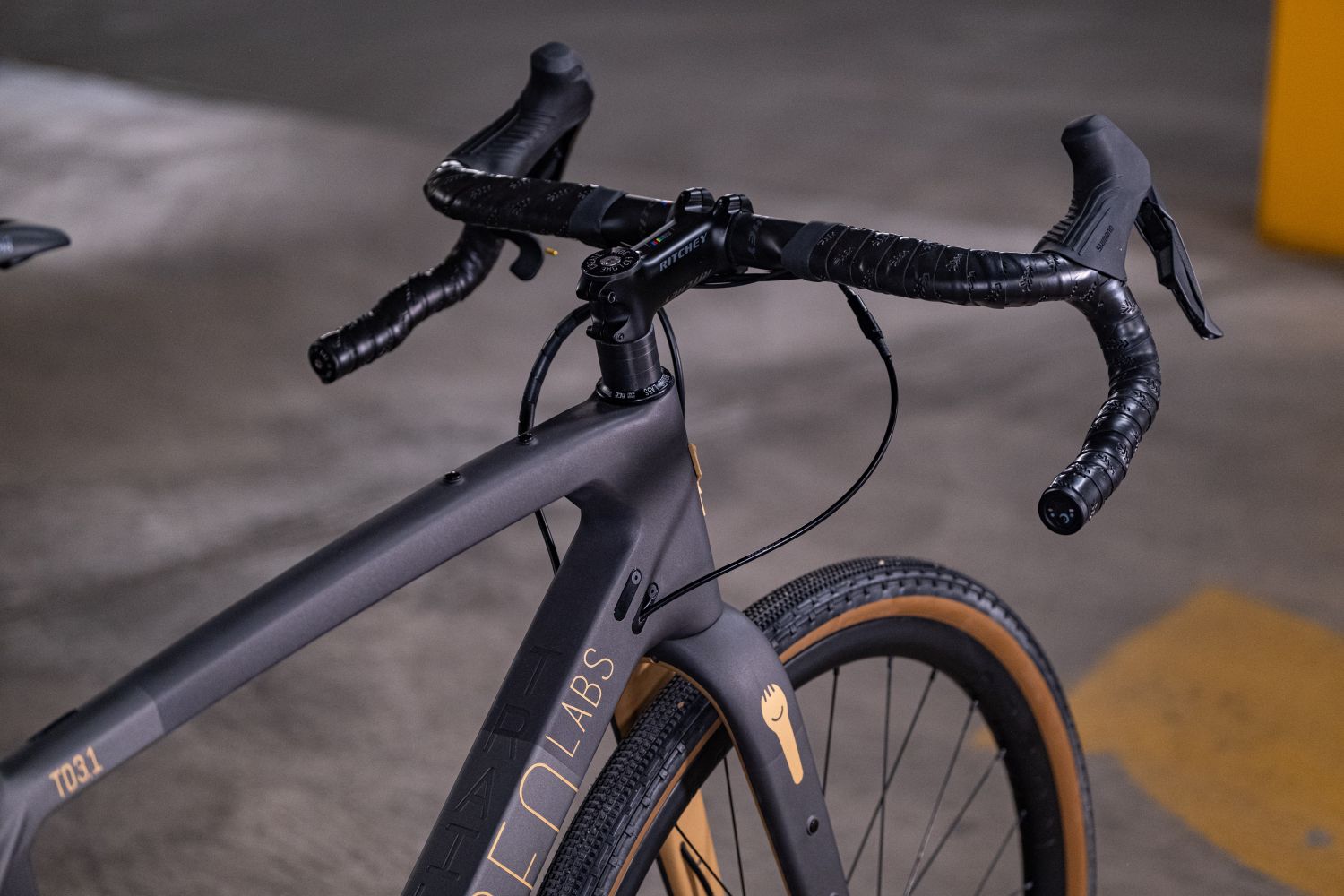
Non Integrated internal routing is just like semi integrated in that the housing stays outside the bar and stem, and it additionally does not enter the frame through the headset, it usually enters the frame via familiar routing ports on the frame and fork. TD3 and Flaanimal 4 and 5 frames have had Non Integrated Internal Routing for years. It may not be stealthy and sexy compared to integrated, but it is time proven and functional.
External Routing
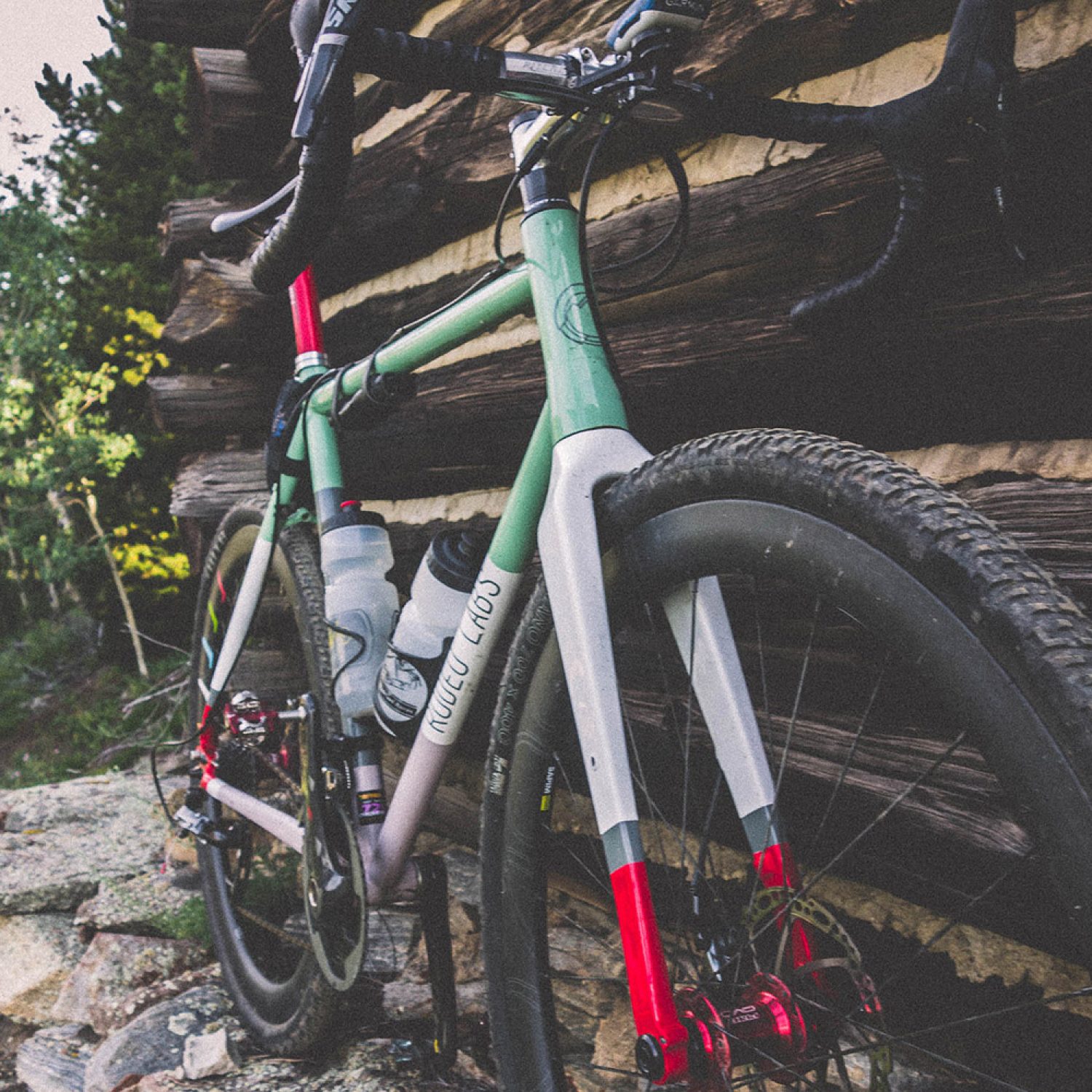
No currently made Rodeo frames have external routing, but older Flaanimal 1, 2, and 3 frames all used that configuration. Externally routed frames leave all routing on the outside of the frame and the lines are attached to the frame via hardware fasteners that bolt to the frame and sometimes even zip ties.
Every type of routing available in bike design has situations where it shines and every routing style has its fans and detractors. Integrated fans love the aesthetics and potential aero qualities it gives. External routing fans love that the bikes that use it are easy to build and service because the housing and lines are all easily accessible and serviceable over the course of the bike’s life. With that in mind let’s go through the pros and cons of each system to the best of our ability so that you can be better educated when configuring your bike for your own riding style.
Pros / Cons
Integrated Routing
Pros:
Integrated is beautiful. No exposed cables, housing, or wires are lovely to look at. The bike looks simple, pure, and uncluttered. Fancy bar / stem combos or one piece barstems tend to have more fluid, aero-ish designs. Attaching bar bags or other gizmos to your cockpit is probably also slightly easier because housing won’t interfere with installation.

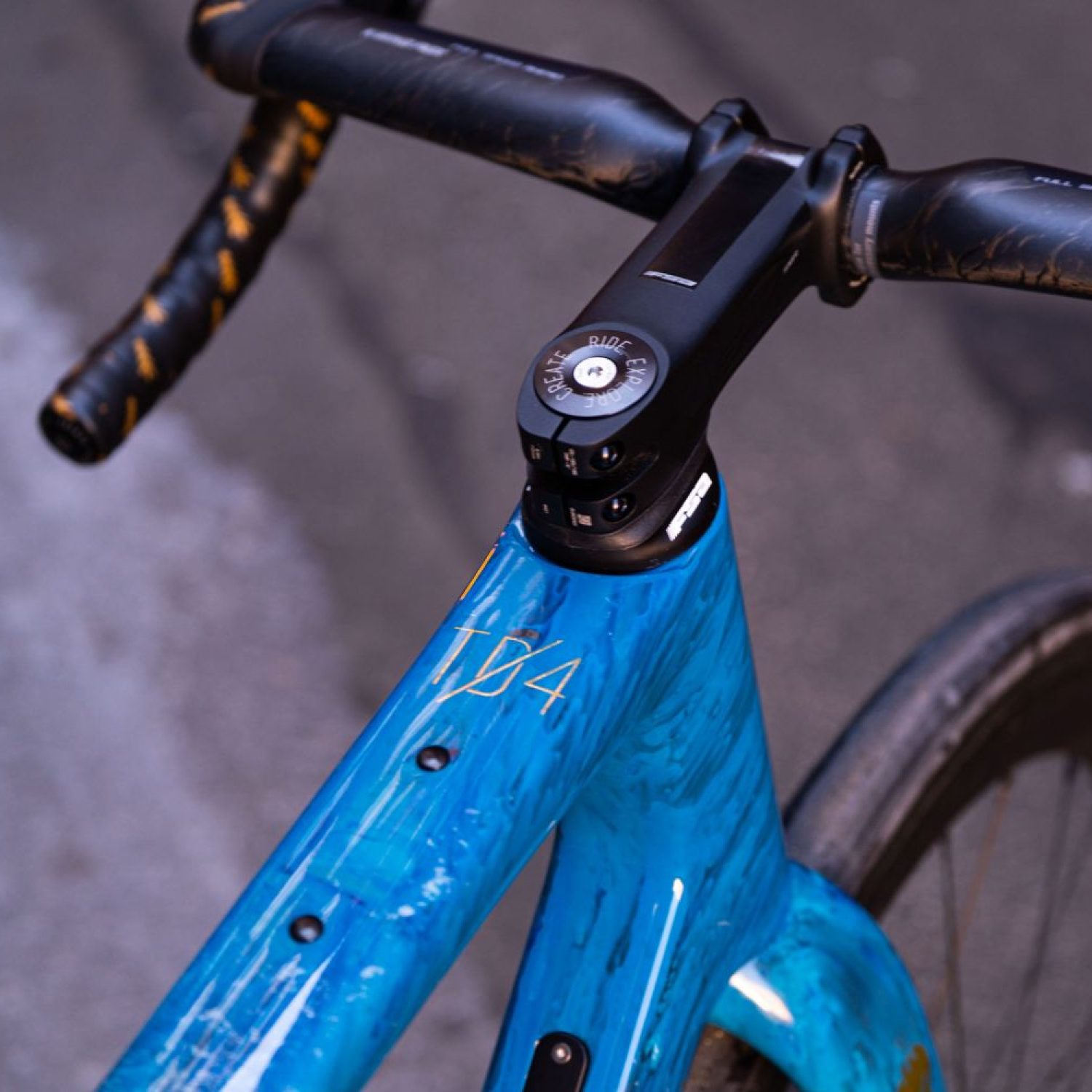
Cons:
Integrated bikes typically do not disassemble well for travel! If you plan on traveling with your bike in a box or a bag you should not consider going with an integrated bike UNLESS it is built with electronic shifting AND hydraulic brake line couplers, which we offer. Checkout this build for reference. Integrated bikes have almost no slack in the brake and shift lines, so taking your bars / stem off and folding them alongside the frame for travel packing simply isn’t possible with an integrated bike. We’ve set this section in bold because it is probably the PRIMARY factor to consider when deciding on integrated or non integrated bike builds.
Integrated bikes are much more difficult to build / assemble. A skilled mechanic will many times at the very least complain and take hours longer to build the bike. An unskilled mechanic will curse, yell, watch hours of youtube how-to videos, curse more, install it all wrong, and then have to disassemble it all to re-assemble it all correctly.
Integrated bikes use fussy headset uppers and specially shaped integrated spacers to keep the visuals looking good. Once you chose an integrated system (FSA for example) you need to use a FSA bar, stem, and headset together on your bike to get it all to play well together and to look good. If mixing and matching components is possible at all you could easily end up with a disjointed overall look if you mix and match different brands. Additionally, many integrated bars, stems, and headsets on the market now are designed to pair with a single brand of bikes. So you can for instance buy Giant parts for your Giant bike, or Factor parts for your Factor bike, but if you want to put Giant parts on your Factor bike you may be out of luck in terms of compatibility. Integrated systems are causing universal fit parts (like traditional bars, stems, and headsets) to be less universal, because third party brands such as Ritchey and FSA have a very difficult time making integrated parts that pair perfectly with proprietary integrated frames. At some point, someone, maybe us, should attempt to make a compatibility chart between all the systems, but that would be a LOT of work.
Integrated bikes have routing that enters the frame at the upper headset and the lines run THROUGH the upper headset bearing. This introduces a potential maintenance problem down the road: If you need to replace your upper headset bearing you’re going to need to pull the derailleur and brake lines out of your frame and back out through the bearing before taking it out or reinstalling it. Once done you will have to re-run your shift and brake lines and re-adjust shifting and re-bleed braking. That said, it is not common for a headset bearing to totally need replacing, and you may not mind having that done every 2-3 years in exchange for a super sexy looking integrated bike.
Side notes: Rodeo headsets that we ship with current frames use stainless steel headset bearings which should increase your replacement interval to “possibly never”.
Semi Integrated Routing
Pros:
Semi Integrated routing allows you to achieve a lot of the aesthetic simplicity of fully integrated by hiding MOST of the cable housing on your bike build. Some is still visible as the lines emerge from your handlebar and enter the headset upper, but Semi Integrated allows you to use ANY normal bars and stems from the aftermarket spectrum. So if you want to build a tidy bike but want to use a Redshift stem and a VentureMax bar, Semi Integrated may be the configuration you are looking for.
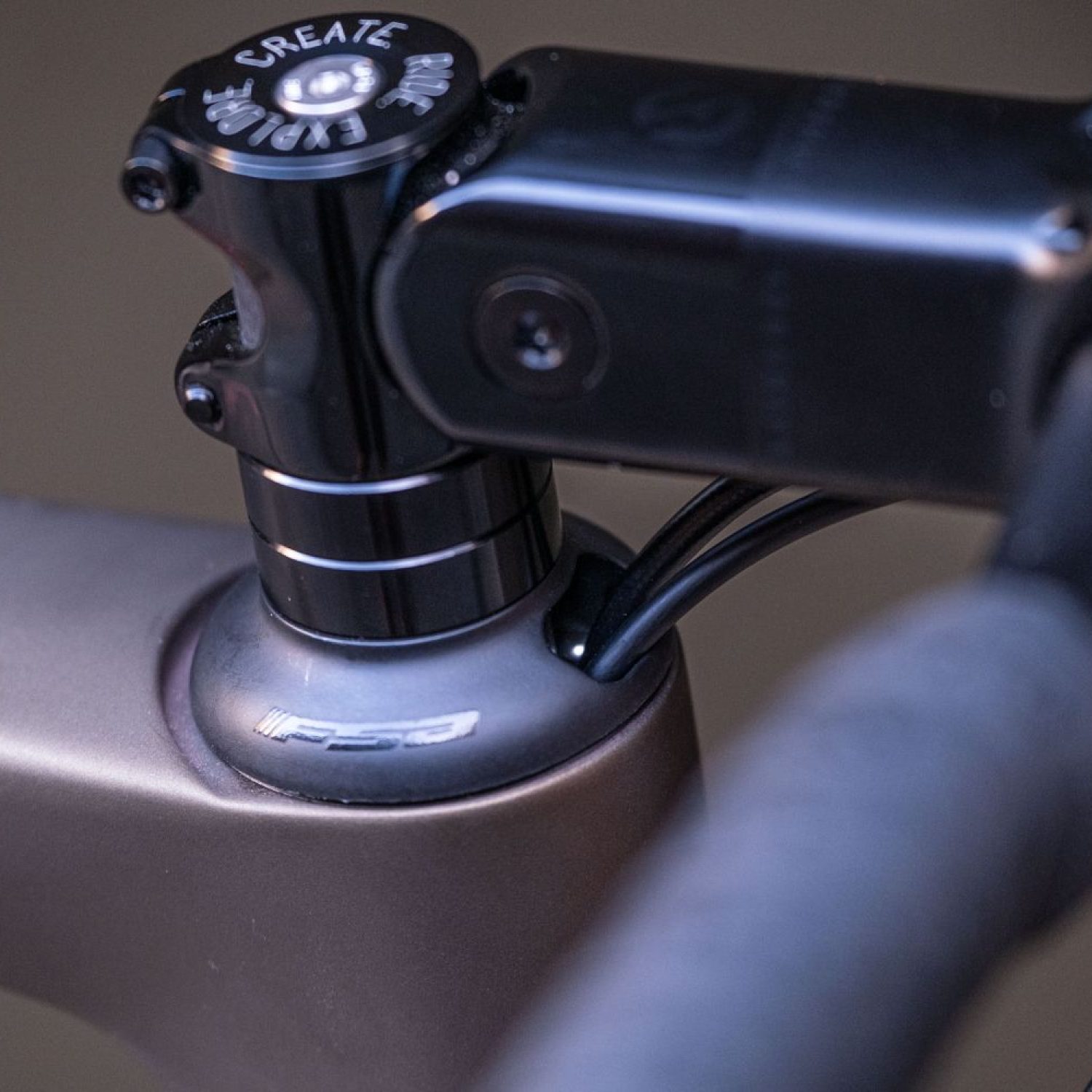
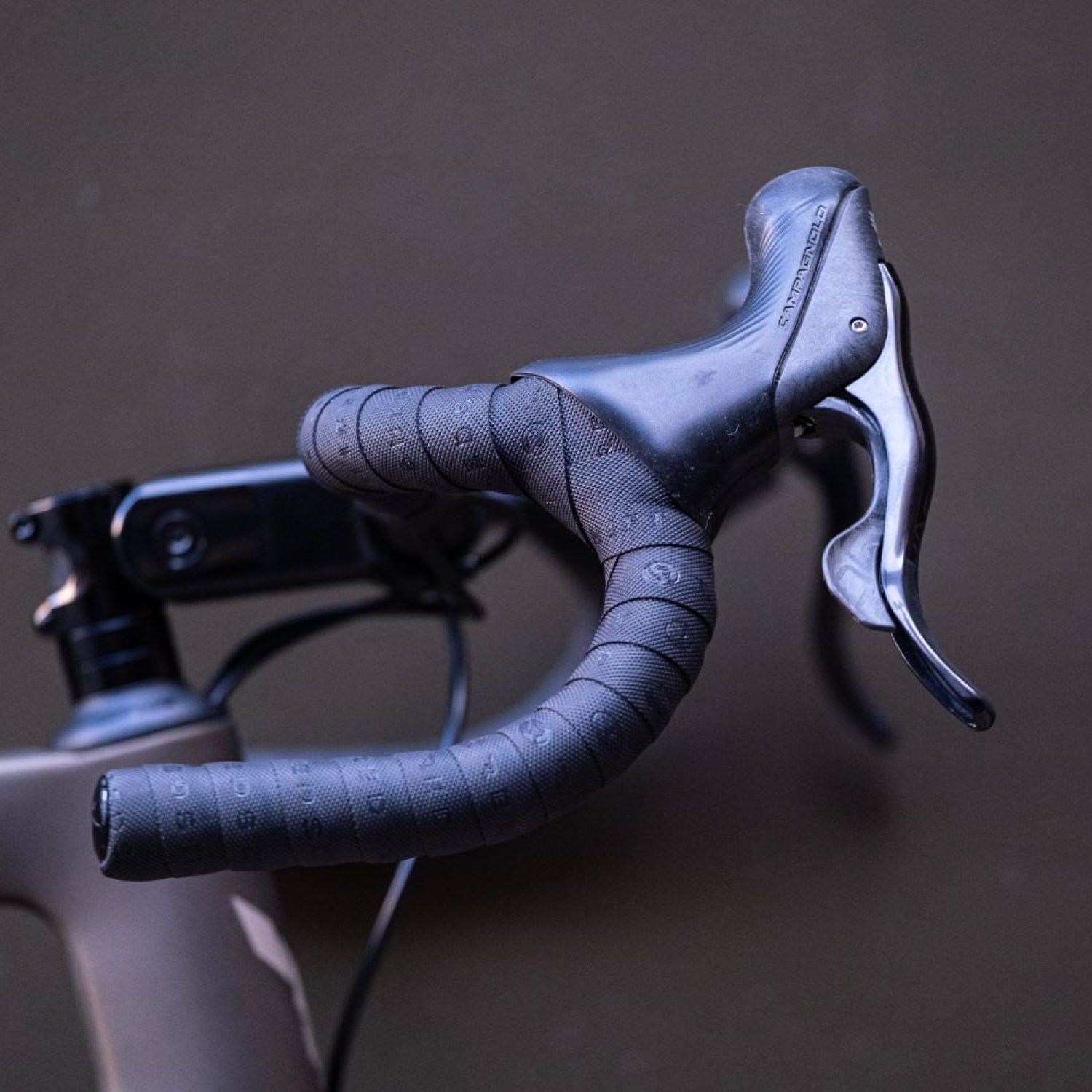
Cons:
Semi Integrated does have more flexibility for taking your bars and stem off for packing, but not much. There simply isn’t that much slack in the system with which to contort your bars / stem / fork when packing the bike. Hence, this system still wouldn’t be the logical choice for someone who plans on traveling extensively with their bike.
Semi integrated headsets such as the FSA headset pictured above have a potential water intrusion point always exposed to the elements. This could lead to rust in your upper headset bearing in particular.
If you need to replace your upper headset bearing because of said rust you’re going to need to pull the derailleur and brake lines out of your frame and back out through the bearing before taking it out or reinstalling it. Once done you will have to re-run your shift and brake lines and re-adjust shifting and re-bleed braking. That said, it is not common for a headset bearing to totally need replacing, and you may not mind having that done every 2-3 years in exchange for a super sexy looking integrated bike.
Side notes: Rodeo headsets that we ship with current frames use stainless steel headset bearings which should increase your replacement interval to “possibly never”. Rodeo is also designing and implementing its own semi-internal headset that will be standard on TD4 frames which will dramatically reduce the potential for water to enter the frame through the headset.
Water finds its way into most frames one way or another if you are riding somewhere wet, no matter much you try to prevent it. All of our frames have drain holes at the BB shell to allow water that finds its way into your frame to find its way back out.
Non Integrated Internal Routing
Pros:
Non Integated Internal routing is one of the best options for people who plan on traveling with their bike. Removing the bar and stem and fork and positioning them in a tiny bag such as an Airport Ninja is very do-able with non-integrated internal routing and could save you a LOT of baggage fees over the life of your bike if you plan on traveling. As mentioned our Flaanimal and TD frames of previous generations have all used non integrated internal routing with great success. Sure, there is more routing visible and the builds aren’t super tidy to look at compared to integrated, but the bikes just work, and you can bolt the widest range of parts to them. It could be argued that there is no point in messing with this routing system that has been so successful for so long.
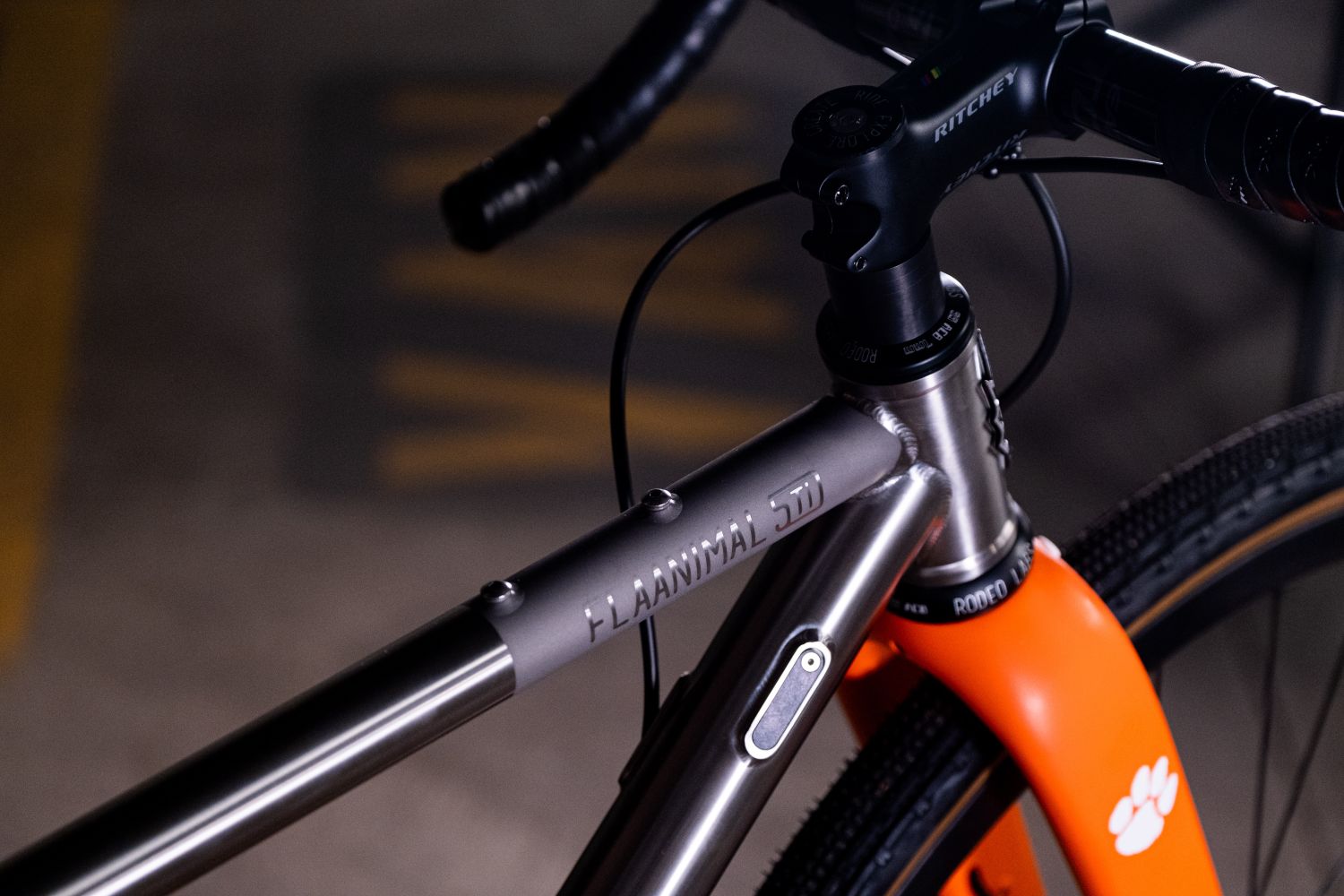
Cons:
Non Integrated internal routing isn’t as pretty as internal.
Non integrated Internal routing MIGHT not be as “aero”.
Non integrated Internal routing is still somewhat difficult to route on some frames.
Full External Routing
Current Rodeo framesets don’t technically support external routing, but TD4 could be built with external routing pretty nicely by using the mounting eyelets on the bottom of the downtube to secure external routing guides. A few zip ties could be required on the chain stays, but functionally you could do it.
Pros:
It is easiest to build bikes with full external routing.
It is easiest to service bikes with full external routing.
You’ll have the least overall potential compatibility issues over the life of the bike with external routing, because it more or less works with almost everything in terms of components and drivetrains.
Cons:
External routing just isn’t sexy… but then again if you’re into external routing maybe you disagree and it IS sexy.
External routing isn’t the most tidy way to build a bike. There are potentially lines running to and fro across your frame, and it’s a lot to take in.
External routing does have more potential to snag elements of nature while riding, and there is more potential that your body itself could come into contact with the housing on some external routing fixtures. On the Flaanimal shown below for instance, the housing guides on the top tube scraped up our legs from time to time, and we eventually moved external routing on subsequent Flaanimals to the downtube to help keep hardware more tucked away. Sometimes the cable ties on external bikes can break and leave the externally routed cables dangling at inopportune times.
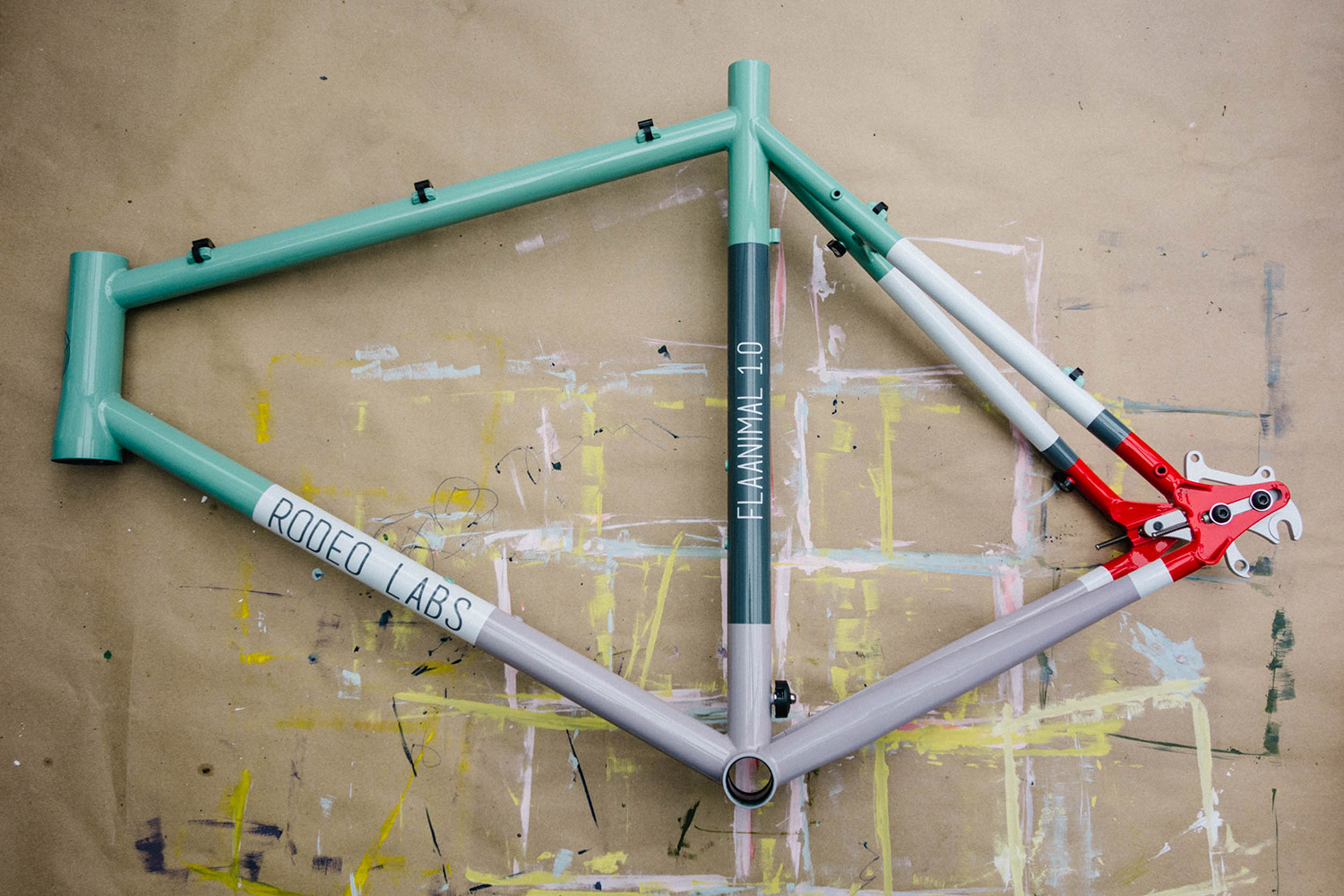
If you feel like we’ve missed any Pros and Cons above feel free to drop a comment and we can add them to this list.
Back to the High Level
So which routing style is right for you? Only you can really decide. If you’re a hardcore gravel racer or cyclocross racer who drives to events you might be prone to go for a fully integrated bike because they are a joy to look at and ride. There is something undeniably cool and beautiful when you’re riding along on one and you look down and there is simply the pure uninterrupted form of the bike to run your eyes up and down. A bike build this way looks purposeful and fast, and that’s an attractive quality, especially in a race bike.
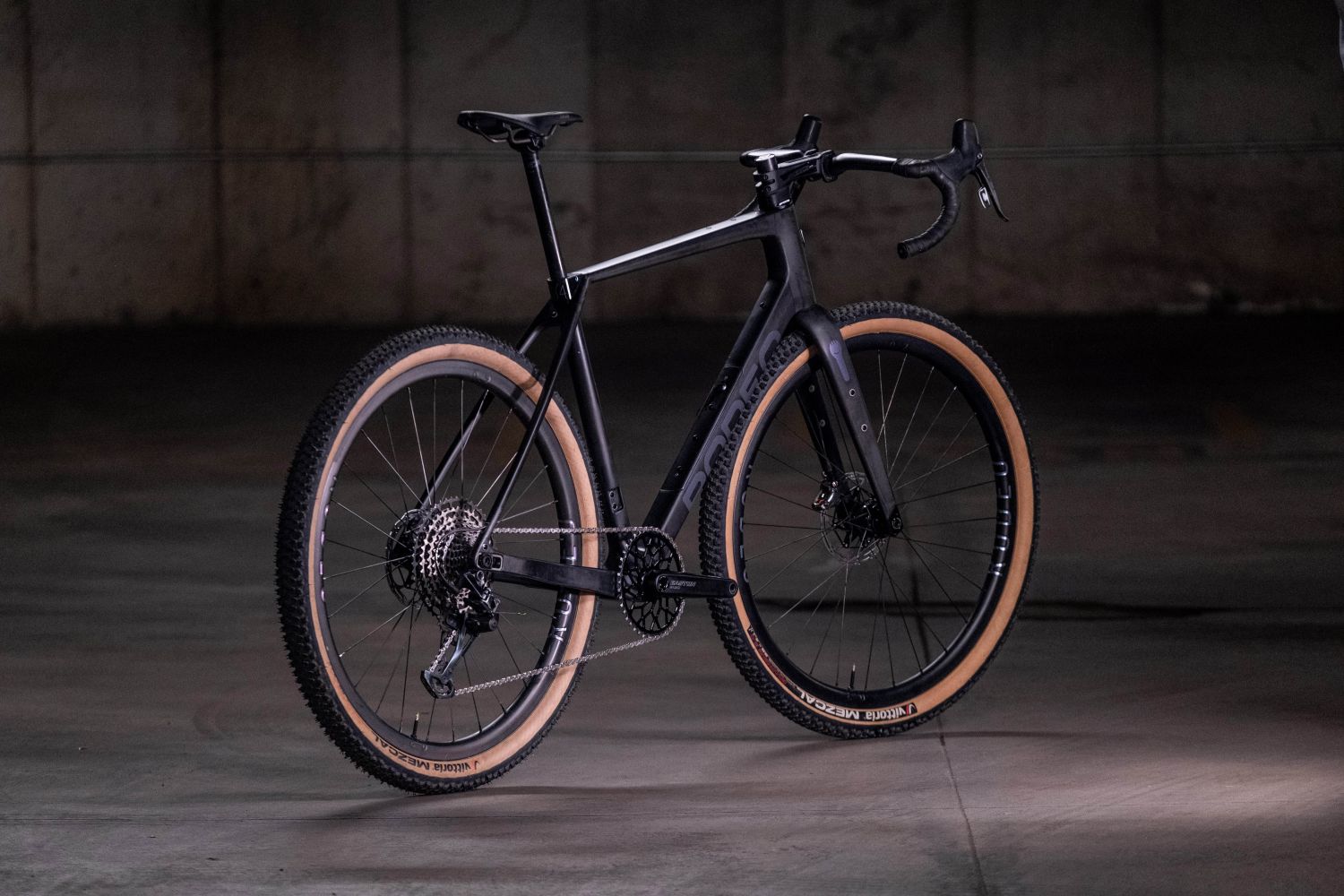
But if you’re a fan of open standards or travel you may want to back away slowly from Integrated and select a more sensible routing configuration to keep your life simple and your build flexible. If you’ve already got a box of parts to bring to a new bike build then it makes a lot of sense to keep things pragmatic and avoid the allure of Integrated as well. If you’re an at home mechanic without much experience you might want to go with a routing style that won’t have you pulling your hair out.
At the end of the day here at Rodeo we want to new features and trends in bike design without leaving out proven solutions that have served riders for decades, so with our new TD4 we built a frame that plays very well with integrated routing, but also allows riders to stick with other styles that they are more familiar with. So once again: TD4 does it all. Flaanimal framesets can also technically be built with integrated frame routing if you opt for a press-in integrated headset and also use an integrated cockpit, but until we release a retail Spork 3.2 with internal steer tube routing to work with integrated cockpits, the bikes are still best built with internal downtube routing as they have been for years.
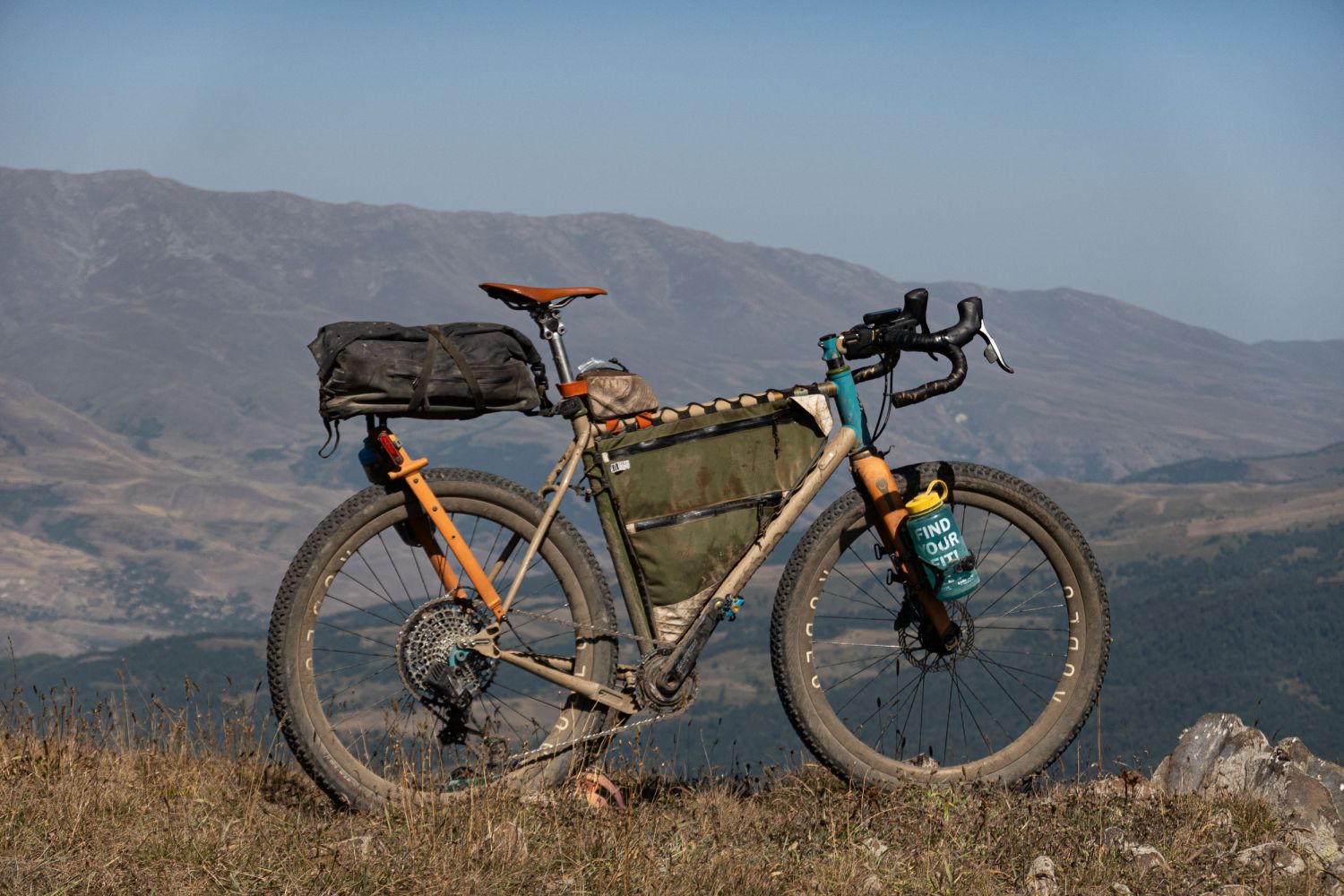

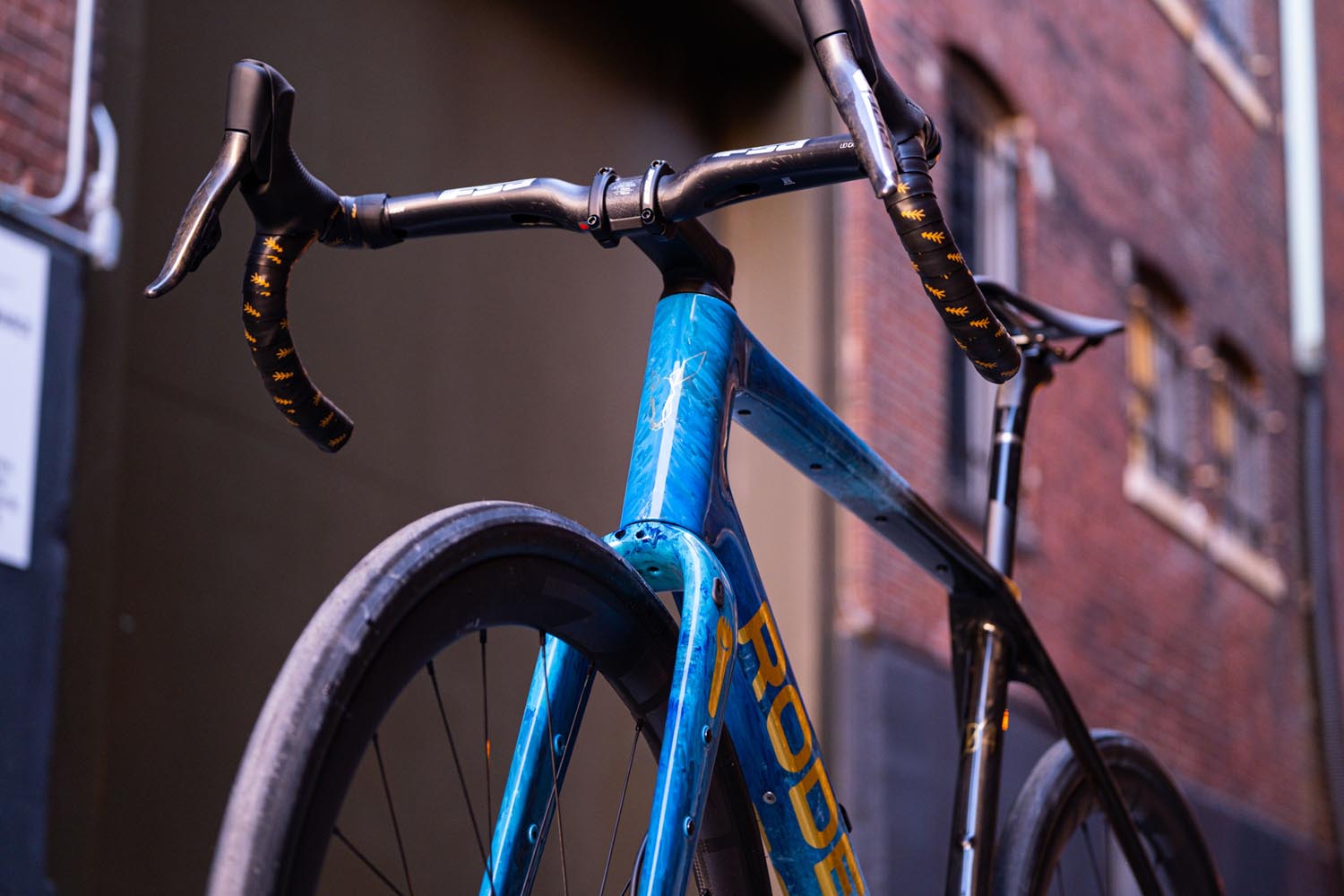
1 Comments
thanks for leaving options open